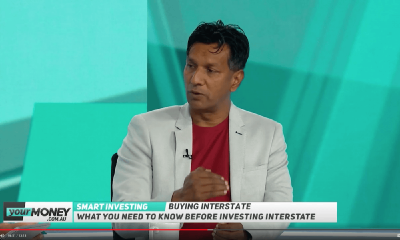Uncategorised
What is Mostbet: A Complete Guide to Online Betting
What is Mostbet: A Complete Guide to Online Betting
Mostbet is a popular online betting platform that offers users the chance to bet on a wide variety of sports events, casino games, and live matches. It has gained significant attention in the digital betting world due to its user-friendly interface, diverse betting options, and attractive bonuses. This complete guide will explore what Mostbet is, how it operates, its key features, registration process, and safety measures, making it easier for new users to get started confidently. Whether you’re a seasoned bettor or a newbie, understanding Mostbet’s ecosystem can open doors to thrilling online wagering experiences.
Understanding Mostbet: Platform Overview and Services
Mostbet operates as an online sportsbook and casino platform, catering primarily to bettors who want quick access to betting markets and casino games in one place. It covers an extensive range of sports such as football, tennis, basketball, and esports, alongside a comprehensive slot machine and live casino portfolio. The platform’s intuitive design allows users to navigate between pre-match bets, live betting, and virtual sports effortlessly. Moreover, Mostbet supports multiple currencies and regional languages, enhancing accessibility globally. One of the platform’s hallmark features is its dynamic live betting interface, providing real-time odds updates and streaming options. By combining sportsbook and casino entertainment, Mostbet appeals to a broad audience looking for versatile online betting experiences.
How to Register and Start Betting on Mostbet
Getting started on Mostbet is a straightforward process, designed to minimize entry barriers for new users. Registration requires just a few simple steps: inputting your email or phone number, creating a password, and confirming your identity. Once registered, users must verify their account details to withdraw winnings securely. Mostbet supports deposits through multiple payment methods, including credit cards, e-wallets, cryptocurrencies, and bank transfers, providing flexibility for bettors worldwide. After funding the account, users can navigate the sportsbook or casino section and place bets on favorite games or matches. The platform’s mobile app also makes registration and betting on the go even more convenient, ensuring uninterrupted access to betting markets anytime and anywhere mostbet.
Key Features that Make Mostbet Stand Out
Several unique features set Mostbet apart in the competitive online betting market:
- Wide Range of Betting Markets: From major leagues to niche competitions and esports, Mostbet offers an extensive collection of betting options.
- Live Streaming and In-Play Betting: Users can watch live matches and place bets simultaneously, which enhances the overall experience.
- Attractive Bonuses and Promotions: The platform consistently offers welcome bonuses, cashback, and free bet opportunities.
- Secure Payment Methods: Multiple trusted payment gateways ensure quick and safe transactions.
- Multi-Language Support: Catering to a global audience, Mostbet is available in numerous languages, making navigation easier for international users.
- Mobile Compatibility: A dedicated app for iOS and Android ensures smooth and fast betting from mobile devices.
Safety, Security, and Customer Support on Mostbet
When it comes to online betting, security and reliability are paramount. Mostbet invests in high-level encryption technologies to safeguard user data and financial transactions. The platform also employs rigorous account verification and anti-fraud measures to protect its users. Customer support is available around the clock through multiple channels including live chat, email, and phone support, addressing bet-related issues or technical problems promptly. Additionally, Mostbet adheres to responsible gambling practices by offering tools such as self-exclusion, deposit limits, and reality checks to help users control their betting activity. These security and support features contribute to Mostbet’s reputation as a dependable and user-centric online betting platform.
Tips for Successful Betting on Mostbet
Although online betting includes an element of chance, adopting strategic approaches can increase your chances of success on Mostbet. Here are some practical tips for bettors:
- Research the Sport or Event: Understanding team form, player statistics, and other relevant data enhances bet accuracy.
- Manage Your Bankroll: Set a betting budget and stick to it to avoid excessive losses.
- Utilize Bonuses Wisely: Use Mostbet’s promotions but always read terms and conditions carefully.
- Explore Live Betting: Betting in-play can offer better odds if you follow the game closely.
- Avoid Emotional Betting: Place bets based on logic and research, not personal bias or emotions.
- Stay Informed About Changes: Keep an eye on odds movements and updates on Mostbet to seize the best betting opportunities.
Conclusion
Mostbet stands out as a versatile and user-friendly platform for those interested in online betting. With its comprehensive sportsbook, engaging live betting features, robust security, and multiple payment options, it caters to a varied audience of bettors worldwide. The platform’s constant evolution, mobile accessibility, and excellent customer support ensure a trustworthy and enjoyable betting experience. Whether you’re placing your first bet or looking for a reliable site to expand your gambling horizons, Mostbet offers an all-encompassing solution that combines entertainment, convenience, and safety. By understanding how Mostbet operates and employing sound betting strategies, you can maximize your opportunities and enjoy every wager placed.
FAQs about Mostbet
1. Is Mostbet legal to use in my country?
Mostbet operates legally in multiple countries, but availability varies based on local gambling laws. It is advisable to check your country’s regulations before signing up.
2. What types of payments does Mostbet accept?
Mostbet accepts several payment methods, including credit/debit cards, e-wallets like Skrill and Neteller, bank transfers, and cryptocurrencies such as Bitcoin.
3. Can I use Mostbet on my mobile device?
Yes, Mostbet offers a dedicated mobile app for both iOS and Android devices, allowing seamless betting from smartphones and tablets.
4. Are there any bonuses for new users on Mostbet?
Mostbet frequently provides welcome bonuses to new users, such as deposit matches or free bets. Always check the promotions page for the latest offers.
5. How do I contact Mostbet customer support?
Customer support is available 24/7 through live chat, email, and phone. You can reach out anytime for assistance with your account or bets.
Uncategorised
Why Staking Pools Matter: A Street-Level Guide to Ethereum Staking and Governance
Whoa! The staking world is noisy right now. I’m biased, but it feels like everyone wants yield without the homework. Initially I thought that liquid staking would be a tidy shortcut for most users, but then I watched market dynamics and governance debates complicate the picture. On one hand pools democratize access to staking rewards, though actually on the other hand they centralize influence unless users act intentionally and understand trade-offs.
Seriously? Yes. Many people still treat staking pools like bank accounts. They deposit ETH and expect the rest to just happen. My instinct said somethin’ felt off about that hands-off attitude, because protocol incentives and token economics actually matter. If you care about decentralization — and you should — then who controls the staking pool matters as much as the yield itself.
Hmm… here’s something practical. When you stake via a pool you trade a direct validator slot for liquidity and convenience. That convenience is valuable. But it’s not free. Providers may take fees, and governance tokens can skew future protocol decisions toward big operators, not users. So the question becomes: are you optimizing for short-term yield, long-term protocol health, or both?
Whoa! Pools are convenience machines. They let you participate with small amounts of ETH. They also offer liquid derivatives that you can use for DeFi strategies. Yet those derivatives create new risk channels — smart contract bugs, peg slippage, and concentration of exit liquidity, to name a few, which means you need to evaluate both smart contract risk and counterparty risk, and not just APY.
Okay, so check this out—liquid staking tokens behave like shorthand claims on staked ETH. They let you keep capital fluid while still earning rewards. But they introduce governance dynamics: when holders of a protocol token vote, large pools can sway outcomes. On balance, liquid staking is a powerful tool when used deliberately and with awareness of power centralization.
Whoa! I still use liquid staking myself. I’m not a zealot for doing everything yourself. Practicality wins sometimes. However I keep a mental checklist: who runs the operator nodes, what’s the slashing risk, and how are rewards distributed? These are very very important details you shouldn’t gloss over. Also, check operator histories — uptime and incident response matter a lot.
Here’s the thing. Not all pools are equal. Some prioritize decentralization and distribute operator duties. Others aim for scale and may route everything through a handful of operators to maximize efficiency. Initially I favored scale for lower fees, but then I realized governance and censorship resistance trade-offs. Actually, wait—let me rephrase that: scale reduces some costs but increases systemic risk, and that trade-off is often underpriced.
Whoa! Governance tokens add another layer. They’re supposed to give stakeholders a voice. But in practice governance often concentrates, and token distribution matters more than idealized voting rights. On one hand governance tokens can fund public goods and bootstrap ecosystems; on the other hand they can centralize power and create coordination failures that the community then struggles to fix. The nuance here is subtle and important.
Check this out—if you want to follow a specific provider’s path, read their docs and community threads. For an example of a major liquid staking provider that’s widely used, see lido. I’m not telling you that’s the best choice for everyone. I’m just saying they’re a major actor you should understand. Look at validator distribution, DAO voting patterns, and tokenomics before you commit.

How to Evaluate a Staking Pool (Practical Checklist)
Whoa! Start with operator decentralization. Count the number of independent node operators and check their geographic distribution. Verify their uptime statistics and past incident reports, because outages are costly and slashing is an unforgiving mechanism that can burn stakers’ capital. Next, inspect the smart contracts: audit history, bug bounty coverage, and whether the code is open and actively maintained — these technical signals matter a lot, even if they don’t feel flashy.
Seriously? Look at fee structure. Understand both explicit fees and implicit costs like peg degradation or liquidity slippage when you redeem liquid staking tokens. On one hand low fees are attractive; though actually extremely low fees sometimes mean the operator makes decisions that favor short-term revenue over protocol resilience. Consider how rewards are split, whether there’s a performance fee, and if there’s any vesting for reward streams.
Hmm… governance participation is crucial. Does the pool’s DAO vote as a block? Do they publish rationale for votes? Are token holders encouraged to delegate and participate? Initially I thought governance tokens would align incentives, but I learned that passive holdings plus concentrated voting can misalign them. So watch how governance power is used, not just how it’s allocated.
Whoa! Risk models vary. Some pools use insurance or reserves to handle slashing, while others absorb slashing across stakers pro rata. Read the fine print. Think about worst-case scenarios: what happens if 5% of validators are slashed simultaneously, or if there’s a major smart contract exploit? If you can’t map the failure modes, maybe pause and learn more before staking large sums.
Okay, so here’s a user story. A friend of mine used a large pool because it was easy and advertised high uptime. He did very well for a year. Then a governance dispute led the DAO to support a controversial upgrade that briefly affected peg liquidity, and his liquid staking token suffered short-term de-pegging. He recovered most losses, but it was a wake-up call. That experience shifted my instinct: yield without attention is a fragile thing.
Whoa! There’s also a composability angle. Staked derivatives open up yield layering strategies across DeFi. They let you supply collateral, farm yields, or provide liquidity to AMMs, which can compound returns. However layering strategies amplify systemic risk: leverage, correlated liquidations, and oracle failures can cascade. So if your plan involves stacking exposures, be conservative with leverage and understand the liquidation mechanics.
Hmm… regulatory risk isn’t theoretical. In the US the regulatory landscape keeps shifting, and liquid staking could attract scrutiny because of custody semantics and secondary markets for staking claims. I’m not a regulator, but I’m watching this closely. If policy changes, operator behaviors and fee structures might change too, affecting downstream holders. This uncertainty is part of the risk profile you should weigh.
FAQ
How do liquid staking tokens work?
They represent a claim on staked ETH plus accumulated rewards, and are issued by the staking pool when you deposit ETH. They are tradeable and can be used in other DeFi protocols, which creates liquidity but also additional smart contract and peg risks.
Should I stake via a pool or run my own validator?
It depends. Run your own validator if you have 32 ETH, technical skill, and the appetite to manage uptime and slashing risk. Use a pool if you want smaller-ticket access, liquidity, and simpler UX; but then vet the provider carefully and consider governance concentration risks.
What about governance tokens?
Governance tokens can align incentives but often concentrate influence. Follow voting records, read proposals, and don’t assume token ownership equals responsible voting — check what operators actually do in practice before trusting them with long-term influence over protocol direction.
Uncategorised
Polkadot AMMs: Practical Strategies for Yield, Slippage, and Real-World Trading
Okay, so check this out—I’ve been noodling on AMMs and liquidity on Polkadot for a while. Whoa! The ecosystem moves fast, and somethin’ about the way automated market makers handle capital just bugs me. My instinct said “more yield is always better,” but actually, wait—there’s nuance. You can chase high APRs and watch impermanent loss eat your gains, or you can tune for low slippage and steady returns. Hmm…
DeFi folks on Polkadot know the promise: shared liquidity, cross-chain composability, and smaller fees compared to some chains. Seriously? Yes. But trade execution quality still matters. On one hand, AMM design determines how your trade impacts price. On the other, how liquidity is managed across positions changes yield outcomes. Though actually, the gap between theory and what traders feel is wide—wider than many docs admit.
Here’s the practical thread I want to pull: how AMM curve design, concentrated liquidity strategies, and slippage protection tools combine to shape yield optimization. I’ll give hands-on ideas that you can test, plus the trade-offs I keep bumping into when advising traders on Polkadot parachain DEXes.

AMM basics—quick, then specific to Polkadot
AMMs replace order books with mathematical curves. Short sentence. They price assets based on reserves and a formula. Slippage is just price impact as trades move along that curve. When liquidity is shallow, slippage jumps. When liquidity concentrates around a price zone, slippage falls for trades near that zone—but risk shifts for LPs.
Concentrated liquidity (think Uniswap v3 style) allows LPs to target ranges, boosting yield when you pick the right band. But targeted bands increase exposure to price movement. If the pair leaves your band, your position might convert fully into one asset and stop earning fees. Hmm. That’s why active management matters.
Polkadot adds both promise and complexity. Parachains enable lower base fees and faster settlement, and cross-chain bridges increase asset availability. Still, liquidity fragmentation across parachains can raise effective slippage if assets aren’t pooled efficiently. Something felt off the first time I compared quoted slippage on two Polkadot DEXs—numbers looked similar, but execution told a different story.
Practical yield optimization strategies
Start with the objective: do you want passive fee income, capital appreciation, or minimized trading costs? Short answer: you can’t have it all.
1) Use range strategies selectively. Medium sentence to explain this. Narrow ranges increase fee capture per unit of capital, but they require active monitoring.
2) Ladder liquidity bands. Spread your liquidity across several adjacent ranges instead of one tight band. This reduces the chance of being fully nudged out, and it smooths returns. It also lowers peak APR but stabilizes the yield profile.
3) Consider asymmetrical exposure when you expect directional moves. If you think DOT will appreciate, bias the pair toward the other asset within your bands. You’ll still earn fees, but you tilt the position to capture upside.
4) Use external yield tools carefully. Auto-compounders can save time, but they sometimes rebalance at suboptimal moments, missing a better price window. I’m biased, but I prefer semi-automated flows where I set the parameters and check monthly.
Risk control matters. Don’t park all liquidity at one price point. And yes, gas and execution fees matter on Polkadot too—even if lower than alternative L1s—because frequent rebalancing eats net yield.
Slippage protection—what to watch for
Slippage hurts both traders and LPs. For traders, it increases cost. For LPs, high slippage signals shallow liquidity which can mean larger impermanent loss when big trades occur. Really?
Use these tactics: set slippage tolerances that mirror realistic market conditions, use limit orders where supported, and route trades through deeper pools. On Polkadot, routing across parachain liquidity can be tricky; path selection matters.
One useful trick: simulate execution against current pool reserves before sending transactions. This gives a pre-check estimate for price impact. Many wallets and DEX UIs offer that view—don’t ignore it. Also, watch for front-running and sandwich risks on public mempools when slippage tolerances are wide.
Finally, embrace partial fills for large orders when possible. Breaking big trades into smaller tranches reduces price impact and can result in better VWAP (volume-weighted average price).
How AMM design affects both yield and slippage
Different AMM curves fit different market behaviors. Constant product (x*y=k) is simple and resistant to price manipulation for small trades. Stable-swap curves (like those used for stablecoins) reduce slippage for close-priced assets. Curve choice affects fee accrual dynamics and impermanent loss profiles.
When choosing pools on Polkadot, check the curve type. A stable-swap pool for two wrapped versions of DOT might be better for low-slippage swaps than a constant-product pool. But fees are often lower in stable pools, meaning LP yield depends heavily on trade volume.
On one hand, aggressive fee settings help LPs earn more per swap. On the other, high fees discourage traders, reducing volume. So protocol governance and fee schedule become part of your yield calculus. I’m not 100% sure which fee mix is optimal long term, but I keep leaning toward mid-range fees with higher expected volume.
Execution hygiene—tools and habits
Here are real habits that help: monitor pool depth, keep a watchlist of key pairs, and use backtests on historical price moves when possible. Also—seriously—use testnets for strategy testing before committing capital in live pools.
Layer in slippage protection settings in your trading interface. If your wallet or DEX UI supports limit orders, use them for predictable fills. Route trades through bridges and routers that provide multihop path optimization. (Oh, and by the way… check the router’s reputation—some are more reliable than others.)
For LPs, automate alerts for when your position drifts out of profitable ranges. Selling into the drift can be a rational choice rather than watching invisible erosion of yield.
Where asterdex fits in
I’ve been tracking practical platforms on Polkadot, and asterdex has a neat balance of features for traders and LPs; its UX makes range positions easier to manage, and routing often finds deeper liquidity paths than some alternatives. If you want to try one interface that ties these concepts together, check out asterdex—I used it to test laddered ranges and saw execution improvements on medium-sized trades. Not an ad, just sharing what worked in practice for me.
FAQ
How do I reduce impermanent loss while optimizing yield?
Split liquidity across adjacent ranges, use stable-swap pools for like-for-like assets, and avoid overly tight bands unless you can monitor and rebalance. Long sentence that ties it together: combine passive broad-range exposure with a small active allocation to tight ranges for yield capture when market conditions are favorable.
What slippage tolerance should I set?
It depends on pair volatility and trade size. For small trades in deep pools, 0.2–0.5% is often fine. For larger trades, expect to lower trade size or accept higher slippage. If you’re uncertain, simulate first and break orders into tranches.
Are auto-compounders worth it on Polkadot?
They save time and can increase APR via compounding, but only if compounding fees and timing don’t offset gains. I’m biased toward semi-automated approaches—automation with guardrails works best for me.
Alright—final thought: DeFi on Polkadot gives traders and LPs tools to tune outcomes, but those tools come with trade-offs. You can optimize for yield or for low slippage, but rarely both at once. So pick your priority, set your guardrails, and iterate. Trade safe, and don’t forget to test strategies with small capital first—I’ve had to remind myself of that more than once.
Uncategorised
Die besten Taktiken für Plinko: Ein Leitfaden für Online-Casino-Spieler
Die besten Taktiken für Plinko: Ein Leitfaden für Online-Casino-Spieler
Plinko ist ein faszinierendes Spiel, das in vielen Online-Casinos verfügbar ist und zunehmend an Beliebtheit gewinnt. In diesem Artikel werden wir die besten Taktiken für Plinko untersuchen, damit Spieler die Gewinnchancen maximieren und gleichzeitig Spaß haben können. Bei Plinko geht es nicht nur um Glück, sondern auch um Strategien, die man anwenden kann. Wir werden die grundlegenden Spielmechaniken, taktische Ansätze und praktische Tipps analysieren, um Ihre Spielerfahrung zu optimieren.
Die Grundlagen von Plinko verstehen
Bevor wir in spezifische Taktiken eintauchen, ist es wichtig, die Grundmechanik von Plinko zu verstehen. Plinko ist ein Spiel, das auf einem vertikalen Brett aufgebaut ist, in das Spieler eine Kugel fallen lassen. Die Kugel prallt von Stiften ab und landet schließlich in einem der Fächer am Boden, die unterschiedliche Geldbeträge repräsentieren. Die häufigsten Grundsätze, die man beim Spielen von Plinko beachten sollte, sind:
- Die Ausgangsposition der Kugel kann den Flugweg beeinflussen.
- Jedes Wochenende gibt es oft spezielle Angebote oder Boni.
- Das Timing der Einsätze kann sich auf die Gesamtergebnisse auswirken.
Die Mechanik mag einfach erscheinen, jedoch gibt es zahlreiche Variationen und Strategien, die das Spiel interessanter machen können.
Optimaler Einsatz und Budgetverwaltung
Eine der grundlegendsten Taktiken für jedes Online-Casino-Spiel, einschließlich Plinko, ist die Verwaltung Ihres Budgets. Effektive Budgetierungsstrategien helfen Ihnen, verantwortungsvoll zu spielen und Ihre Verluste zu minimieren. Hier sind einige Tipps zur Budgetverwaltung:
- Setzen Sie sich ein Höchstlimit für jeden Spieltag.
- Spieler sollten einen festen Betrag für jede Runde festlegen.
- Reduzieren Sie Ihre Einsätze, wenn Sie eine Pechsträhne haben.
Zusätzlich sollten Spieler den Einsatz anpassen, um sowohl kleine als auch große Gewinne zu erzielen. Es ist wichtig, geduldig zu bleiben und nicht impulsiv höhere Einsätze zu platzieren, wenn die Ergebnisse nicht wie gewünscht ausfallen plinko.
Strategien zur Maximierung der Gewinnchancen
Um die Gewinnchancen beim Plinko zu maximieren, können verschiedene Strategien ausprobiert werden. Einige Spieler schwören auf spezifische Einsatztaktiken oder Muster. Hier sind einige bewährte Strategien:
- Setzen Sie in der Mitte der Anzeige, um die Gewinnchancen zu erhöhen.
- Variieren Sie die Höhe Ihrer Einsätze zur Erhöhung der potentiellen Auszahlungen.
- Teilnehmen an Promotions im Casino, die zusätzliche Gewinnmöglichkeiten bieten.
Es ist wichtig, sich nicht nur auf Zufall zu verlassen, sondern verschiedene Taktiken auszuprobieren, um herauszufinden, welche für Sie am besten funktioniert. Dokumentieren Sie Ihre Ergebnisse, um Ihre eigene Strategie zu verfeinern.
Die Bedeutung von Boni und Promotionen
Ein weiterer essenzieller Bestandteil von Plinko im Online-Casino sind die Boni und Promotions. Oftmals bieten Online-Casinos Werbeaktionen an, die es Spielern ermöglichen, zusätzliche Einsätze zu platzieren oder Freispiele zu erhalten. Einige Punkte, die Sie beachten sollten, sind:
- Willkommensboni für neue Spieler sind oft sehr vorteilhaft.
- Regelmäßige Promotions, die es Ihnen ermöglichen, Ihr Spielguthaben zu erhöhen.
- Treueprogramme, bei denen regelmäßige Spieler zusätzliche Vorteile genießen können.
Die Nutzung dieser Angebote kann nicht nur helfen, das Laufende Spielguthaben aufzustocken, sondern auch die Gesamterfahrung deutlich verbessern, indem sie zusätzliche Gewinnchancen bieten.
Die richtige Einstellung beim Spielen
Schließlich ist es wichtig, die psychologische Komponente beim Plinko nicht zu vernachlässigen. Eine positive Einstellung und das richtige Mindset können eine entscheidende Rolle bei Ihrem Spielverlauf spielen. Dinge, die Sie beachten sollten, sind:
- Spielen Sie aus Spaß, nicht nur um zu gewinnen.
- Setzen Sie sich realistische Erwartungen und akzeptieren Sie, dass Verluste Teil des Spiels sind.
- Bleiben Sie geduldig und versuchen Sie nicht, Verluste sofort wieder aufzuholen.
Eine entspannte Haltung beim Spielen sorgt dafür, dass Sie das Erlebnis genießen und die Risiken besser einschätzen können. Negative Emotionen können oft zu impulsiven Entscheidungen führen, die sich ungünstig auf Ihre Spielergebnisse auswirken können.
Fazit
Die Besten Taktiken für Plinko bieten Spielern eine ausgezeichnete Möglichkeit, ihre Gewinnchancen und das Gesamterlebnis zu verbessern. Durch das Verständnis der Spielmechanik, effektive Budgetverwaltung, strategische Einsätze und die Nutzung von Boni können Spieler Plinko erfolgreicher spielen. Eine positive Einstellung ist ebenfalls entscheidend für den langfristigen Spaß am Spiel. Denken Sie daran, dass Glücksspiel immer mit Risiken verbunden ist und es wichtig ist, verantwortungsvoll zu spielen.
FAQ
1. Was ist Plinko?
Plinko ist ein Glücksspiel, bei dem Spieler eine Kugel auf einem vertikalen Brett fallen lassen, das mit Stiften versehen ist. Das Ziel ist es, die Kugel so zu platzieren, dass sie in eines der Geldfächer am Boden rollt.
2. Gibt es Strategien zur Verbesserung der Gewinnchancen?
Ja, durch das Festlegen von Budgets, Anpassen von Einsätzen und das gezielte Nutzen von Casino-Boni können die Gewinnchancen verbessert werden.
3. Welche Rolle spielen Boni im Plinko-Spiel?
Boni bieten Spielern zusätzliche Spielguthaben und erhöhen die Chance auf Gewinne ohne zusätzliches Risiko.
4. Ist Plinko ein Glücksspiel oder ein Geschicklichkeitsspiel?
Plinko ist in erster Linie ein Glücksspiel, da die Ergebnisse zufällig sind. Strategien können jedoch helfen, die Gewinnchancen zu maximieren.
5. Wie kann ich sicherstellen, dass ich verantwortungsvoll spiele?
Setzen Sie sich feste Limits für Ihr Spielverhalten, spielen Sie nur mit Geld, das Sie sich leisten können zu verlieren, und machen Sie regelmäßige Pausen.
-

 Blog6 years ago
Blog6 years agoProperty investors should ‘design their decade’
-

 Press6 years ago
Press6 years agoBuying Interstate
-

 Success Stories1 year ago
Success Stories1 year agoSuccess story | Scott Dillon
-

 Blog6 years ago
Blog6 years agoThe future Brisbane hotspot you haven’t heard about
-

 Success Stories1 year ago
Success Stories1 year agoSuccess story | Namrata & Vishal Marken
-

 Blog6 years ago
Blog6 years agoWealthy suburbs poised for double-digit growth
-

 Podcast6 years ago
Podcast6 years agoWhy investors need to be investing now during the day of reckoning
-

 Blog6 years ago
Blog6 years agoWestpac plans to ‘dump’ risky property investors as rates rise and returns fall

